

Stephen Stills
(1970)
While the single “Love the One You’re With” is the hugely remembered hit from Still’s solo debut, it’s only partly representative of the overall style of the album which also showcases his killer blues guitar on some gritty stripped-down choruses as well as a number of soul-filled melancholic ballads. Thematically, however, the album is overall very much like that song in the sense of being a call to oneness and community and overcoming the fear and conflict of the Vietnam era.
Stills pulled in all kinds of famous friends to collaborate uncredited on the album. (You can very clearly hear Mama Cass in the chorus of “Sit Yourself Down”). My favorites songs are the gospel-styled ballads “Church (Part of Somone)” and the final song “We Are Not Helpless” which not only has a powerful message but breaks into a full out gospel choir for a rousing close. The album was initially the most successful of the four CSNY members who all released albums in 1970.
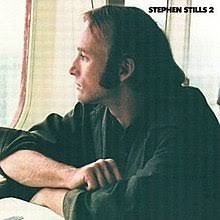

Stephen Stills 2
(1971)
Following very quickly from his first solo album, this part two has a lot of similarities in style but with a bit more jangly guitar and more thematic focus on relationships. Stills did try something new by incorporating horns (a la Blood Sweat and Tears) which doesn’t work to well on the horrible “Bluebird Revisted” but sounds great on one of my favorites of the album “Open Secret”.
His whirlwind of friend appearances continues such as with the single “Change Partners” featuring Jerry Garcia on steel guitar (and an awesome 3/4 to 4/4 back and forth switch) and Eric Clapton on the slightly psychedelic astrological-themed “Fishes and Scorpions”. Though it’s in an odd falsetto, the catchy “Marianne” was another popular hit at the time. Lyrically, I also really like the angry underpinning of “Word Game” which calls out the all too familiar hypocritical racism of Still’s polite South as well as South African apartheid.
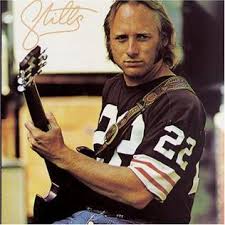

Stills
(1975)
After a brief spin with Chris Hillman and company forming the group Manassas, Stills returned to releasing another round of solo albums beginning with this one. It was fairly well received (in the top 20) but still does not seem quite a strong as his previous albums overall. While it starts off fairly well with the rollicking “Turn Back the Pages” and “My Favorite Changes”, the strength of the melodies and the lively spirit that typified his initial albums start taper off. If anything, the album is a bit wistful with themes of change and sadness.
By far the best songs are “First Things First” with its shuffling baseline and his reworking of the Neil Young song “New Mama” into a layered and laidback groove with great guitar. It has to grow on you, but I do also like the plaintive and halting narrative style of “Love Story”. And even on some of the less captivating songs, Stills’s smooth vocals are very strong and engaging.
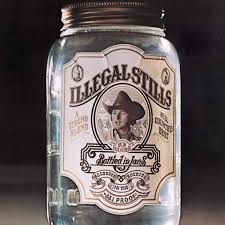

Illegal Stills
(1976)
Save for a few choice songs, this album feels like a decided step down. I don’t know if it’s that the melodies aren’t quite as strong or that a lot of the powerhouse songs like the opening “Buyin’ Time” seem forced and a bit rushed. Despite it being much more focused on rock and electric guitar this time around, it still lacks some of the excitement of his previous works. I think it also suffers a bit because Donnie Dacus, who had become a steady songwriting and instrumental companion during this time, takes over on several lead vocals that have an easy-listening vibe that just do not stand up to Stills usual vocal style.
My favorite song is the topical “Soldier” which somehow despite its Latin underpinning carries across its intention to be an angry protest song on behalf of discarded veterans. Stills reworks another Neil Young song (“The Loner”) though I don’t like it as much this time. Interestingly, he also attempts singing in a bit of French, the language of his then wife Veronica, on “Midnight in Paris”, but I think he lacks the confidence on it such that it does not come across as well as when he does Spanish.
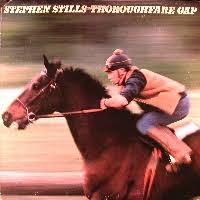

Thoroughfare Gap
(1978)
When I first heard about this being Stills’s “disco album” which didn’t even merit its own separate CD release, I was primed to expect the worst. It actually took just one listen for me to immediately like the album. I would have made some different choices for the order of songs and certain aspects of production, but it’s definitely not the embarrassment I was anticipating.
The opening disco number “You Can’t Dance Alone” is actually a fairly good song, and you can even here a Gibb brother in the background giving it some currency for the era. I do think all of those types of songs should have been grouped together on one side of the album, however; it’s a bit jarring to have them alternate back and forth with the softer songs like “Thoroughfare Gap”. Also some good songs get muddied by heavy handed reverb that wastes some excellent backing instrumentation. (I am particularly thinking of “Gumbo Yumbo”.)
But the biggest surprise was the final song ”Can’t Get No Booty” which I was sure was going to be a cringe-worthy mess and instead is actually a pretty awesome driving song full of blues and synth whose smooth delivery even overcomes its rather awkward lyric. I can’t believe this never caught on as a hit—perhaps it was just ahead of its time as many 90s artist tried to get that exact sound on their records almost twenty years later.
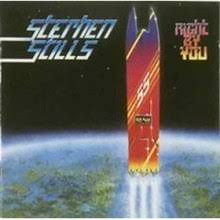

Right By You
(1984)
On first listen, I was ready to complain that this album had been rather unfairly dismissed since the beginning songs, while definitely dated to the 80s, are just as melodically rich, guitar adept, and well-produced as anything else Stills has done. The heavy synthesizer does make it feel like a dance party album at times which is not at all what I think of for Stephen Stills, but the songs seem pretty solid initially. “Stanger” is probably my favorite.
Unfortunately, I found that the quality decidedly drops off on the second half of the album. Many of those songs are rather lackluster or simply grating (particularly the duet “Can’t Let Go” with Mike Finnigan whose voice just does not fit with Stills). Even bringing back his old friends doesn’t help—Graham Nash and Christ Hillman help on many of the songs but in the case of the latter it just leads to a country style song that is totally out of place with the rest of the album. Only the extremely blues-tinged songs really get back to Stephen’s wheelhouse.
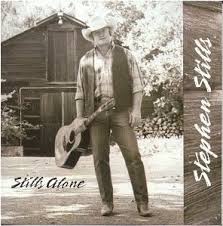

Stills Alone
(1991)
Based on the title and production style, I’m assuming this album was purposely intended to be a stripped down set of songs with just Stills on guitar, a popular trend in the early 90s. For the most part, the album does follow that unplugged style—ultimately feeling like a small backroom concert. That’s not actually a complement though. Instead, the album comes across a bit tired—a singer going through the motions playing some of his old songs out of routine or covering some other artists’ songs without any serious intention.
That said, there are a few songs on here that are not entirely bad and show that Stills still had plenty of musical ability despite a growing problem with his hearing. The opener “Isn’t It So” is a nice gentle addition to Stills’s catalog and his cover of Dylan’s “Ballad of Hollis Brown” really fits his signature style. But nothing stands out in comparison to his previous work and the album definitely didn’t help revive anything for his larger career. But of course he was enough of a music legend that it didn’t really matter anyway. One wonders why he even bothered to put out such an album at all.
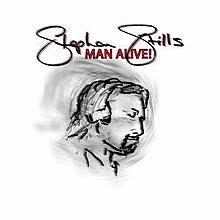

Man Alive!
(2005)
While we probably should be thankful to have had any new music from Stills after a couple of decades of almost none, it is hard not to be a disappointed at how this album comes across as rather “low-budget”. This feeling starts with the lackluster packaging (I felt a little better about it when I learned that the drawing was actually by Stills–but nevertheless the whole design looks like the homemade product of some no-name artist) and continues as you encounter lots of chintzy keyboard (ruining some intense lyrics on “Feed the People”) and mediocre background vocals (like on “I Don’t Get It). Instead of a triumphant return, it feels like a record you have to slog through to find the nice moments or good ideas that could have been.
Incidentally, it’s not entirely accurate to refer to it as “new” music in that many of the songs are re-workings of old recordings or demos. This would not necessarily be bad as there is a wealth of great stuff by Stills out there, but it does contribute to the uneven nature of the album since his voice at the time of this album was frankly becoming quite rough. While that quality adds a lot of flavor to a powerful rendition of “Ole Man Trouble”, it comes across as a bit tired and haggard in other instances. Some of the brightest spots come towards the end from a decent re-rendering of CSN’s “Drivin’ Thunder” to a long foray with jazz legend Herbie Hancock backing that drags for the first half but then soars when it turns into a bluesy ramble that is Stills’s wheelhouse. I also like that after decades of lightly sprinkling his Louisiana influences into his music, Stills finally does an all-out Cajun-style song “Acadienne” and does it really well. Unfortunately, the better parts of the album cannot salvage the bad impression it gives.